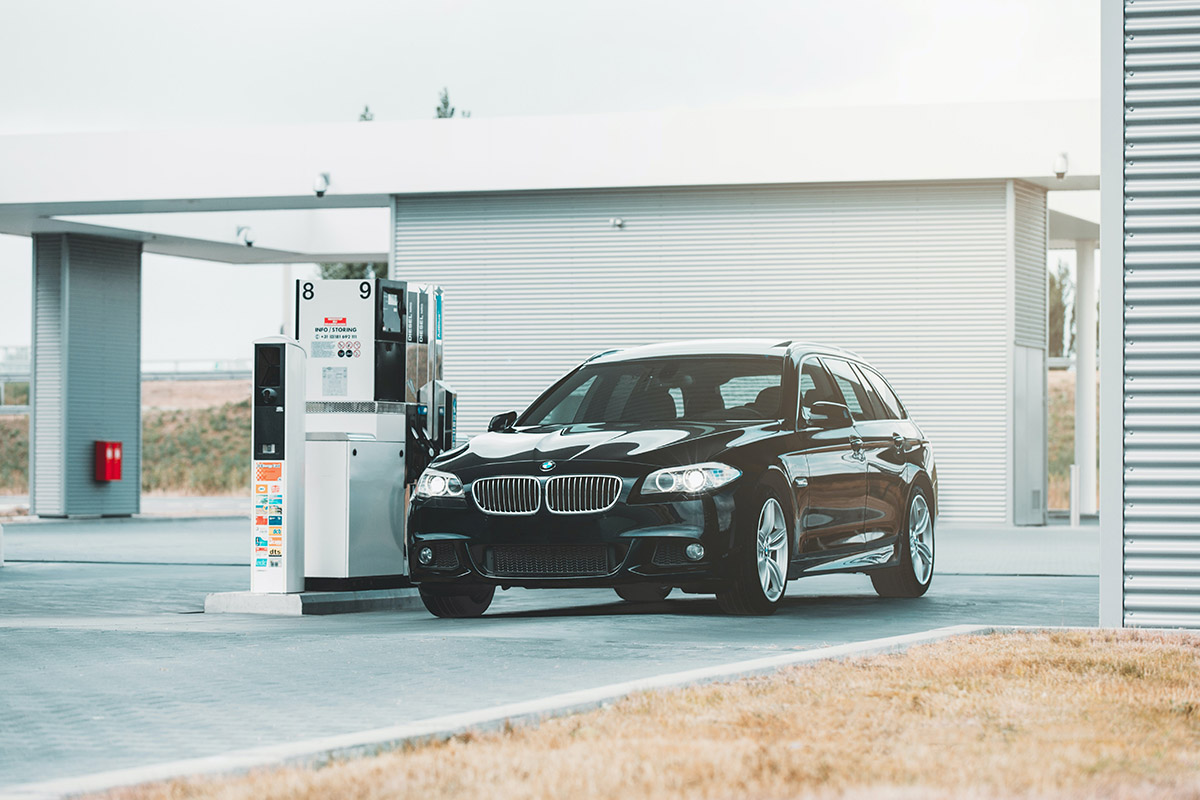Diesel will be preserved – thanks to efficiency
Following Part 1 of Mr. Reinhold M. Karner’s contribution on e-cars as a green tech solution, in the second part of his contribution, Reinhold discusses his views on how diesel engines are likely to be retained in the future, whilst also discussing certain other alternatives in this regard, such as electromobility. Reinhold also discusses certain disadvantages of electric cars, where he notes that hydrogen-based technologies will solve our problems around clean energy and sustainable energy storage in the long term. Read Part 2 of Reinhold’s contribution below, and click here to access Part 1!
How is diesel rated nowadays? First off, it is important to point out that in general, diesel engines are likely to be retained. This is because of the high level of diesel efficiency in trucks and excavators, which will probably not operate on renewable energy or electricity in the near future. Even when it comes to modern diesel technologies which meet the latest ‘Euro-6-d-TEMP’ and ‘Euro 7’ standard specifications, these technologies will probably continue to exist, even more so thanks to the future developments and improved emission control systems that are continuously being optimised. The ‘Euro 7’ emission standard, contrary to what is suggested by German industry and politics, will not lead to the elimination of gasoline and diesel vehicles. A final draft from the European Commission is to be adopted in November 2021. The ‘Euro 7’ will be an achievable additional effort and will probably not be mandatory until 2027. The limit is defined as an overall budget for a defined route. Cars with ‘Euro 7’ standard specifications will only become marginally more expensive. Therefore, diesel has a high probability of remaining in service, especially in larger or heavy passenger cars. Also, a diesel engine consumes 15 % less than petrol, which in turn, benefits the global climate. The performance optimisation of diesel engines instead of consumption and exhaust optimisation seems, in retrospect – although very profitable for carmakers – to be wrong.
And there’s another point here: diesel engines can now meet the nitrogen oxide limits of petrol engines – albeit costing more. Also, the highly equipped direct-injection gasoline engines produce significantly more ultrafine dust than their diesel counterparts. After all, more petrol engines on the road inevitably mean higher carbon monoxide emissions than their diesel engine counterparts.
At this point, we definitely need alternatives, not only for the sake of the environment, but also for the sake of the diversity of energy solutions for the transport industry, particularly in the light of its dire need to move away from oil dependency. Diesel itself, at least the more modern versions, should not be demonised. Having said this, diesel should not be viewed as the ‘ideal’ source, since gasoline, in general, still performs better when it comes to emissions. It is true that there is a severe problem with older diesel engines, namely those which are ‘Euro 4’ or earlier. And when it comes to retrofits, even for ‘Euro 5’ with existing particulate filters, many are still rather sceptical towards them, for several reasons.
However, carmakers like Fiat and Toyota have already announced their eventual departure from diesel production and sales. Volvo is undergoing a complete conversion to electricity. Even top brands, such as BMW and Mercedes, are strongly pushing to shift most of their models to e-versions.
Electromobility has now become the new ‘centre of attention’. The latest analysis carried out by the International Energy Agency (IEA) in their publication entitled “Global EV Outlook 2021”, shows that the global sales of electric vehicles grew by a whopping 41% in 2020, with 10 million electric cars on the roads by the end of the year. Additionally, it was also confirmed that Europe overtook China as the largest electric vehicle market in the world for the first time.
With an eye on Tesla and China, politicians in Europe have turned to electromobility as a superior technology, leaving little chance for the industry. History has shown that there have always been, and there will always be competing technologies, such as iOS and Android. Billions are being invested, and plants are undergoing restructuring processes. Consequently, this will definitely lead to an inevitable loss of know-how in Europe, starting with Universities and Colleges.
The entire industry is now focusing on the electric car. However, it is crucial to understand the subtle differences here. Firstly, which e-car, for example, are we talking about? A purely accumulator-based car which is only rechargeable at recharging units, that is, a “battery-only electric vehicle” (BOEV)? A “plug-in hybrid car” (PHEV), which operates in addition to an ICE with a rechargeable battery-based electric drive which is rechargeable at charging stations via power supply? A hybrid vehicle that charges its battery partly or totally via the combustion engine? Or cars that also partially recycle and recharge energy via brake energy recuperation methods?
Disadvantages of the electric car
The electric powertrain itself is not the problem. The big question is, where does the current electric energy come from? Ultimately, hydrogen fuel cells also generate electrical power. At first, it sounds rather tempting to believe that there is currently no propulsion technology which is more effective than electric technologies. Let’s look at the numbers. To get a mechanical kilowatt-hour into a vehicle, “just” 1.4 kilowatt-hours are needed from, for example, a photovoltaic power station. A loss of only 30 % of energy to the wheel is considered to be extremely low.
The problems lie elsewhere:
- Generally speaking, electric car booms make electricity more expensive as a result of their increased demand.
- Unfortunately, to generate nationwide electricity, we will primarily need non-renewable (“dirty”) energies for many years, or possibly even decades. Therefore, for battery-based e-cars, we are essentially just shifting the exhaust gas pollution from car exhausts, to the chimneys of fossil fuel power plants. Most citizens wouldn’t realise this. To be fair, there are also some upsides, since for example the emissions from exhaust systems, particularly those that occur in cities, are reduced, and the chimneys in power plants have better filters than cars do.
- Batteries, or the so-called ‘battery cells’ for e-cars, are almost identical to the ones which are commercially available and which we use at home, but are rechargeable and bundled en masse. The weight of such ‘battery cells’ often amounts to a weight of up to 750 kgs. And as we all know, batteries are composed of highly questionable materials. In the steel casing, there is a mix of resources that often need to be mined all over the world through inhumane working conditions and collected under enormous logistical efforts, like lithium from Chilean salt lakes, graphite which is often cleaned under pollutive circumstances, and cobalt mining which is often driven by child-labour, amongst many other increasingly scarce resources that make up a battery. And this does not stop here. The electronics and capacitors also require coltan and tantalum, and copper is needed for the cable. Unfortunately, most of these resources are anything but sustainable.
- Moreover, to produce these battery cells, an immense amount of energy is needed. If, as is usually the case, this energy doesn’t come from ecologically renewable (“clean”) sources, then getting just one battery cell for an e-car, can emit as much carbon dioxide as driving around 7 to 8 years with a combustion engine! The use of such sacrilegiously manufactured batteries is disproportionate since the batteries only last for a maximum of approximately 4 years. Just recall the outcry of iPhone customers when it became apparent that Apple had deliberately throttled the smartphone predecessor models’ performance to compensate for the battery degradation. This energy footprint is already much worse than the one of an ICE. And remember, this calculation does not even incorporate the pollutants emitted from the generated electricity needed for the ongoing charging of these batteries, so that’s not even a single mile’s drive! In short: the energy footprint of the electric car is currently a disaster. But hardly any politicians know about this, or want to accept it.
- Strategically, the European car industry needs at least 10 manufacturing plants to produce battery cells for e-cars. Each one requires around 3 billion euro of investment. If these plants are not set up, the European car industry will have to depend on Asian battery producers once again, just like it had been dependent on oil-exporting countries in the past. It would be a disastrous move to leave the technological know-how and the accompanying competitiveness to other continents. The EU has experienced and suffered this already, such as in the case of European photovoltaic manufacturers, where Asian competitors swept the European manufacturers clean from the global market.
- Another question which arises in this regard is the following: Once a battery is at the end of its life cycle, what fate does it face? How are these batteries disposed of? A complex recycling process or pollutive disposal is likely to follow. There could be an intermediate stage at best, where batteries are given a ‘second life’, to serve as storage batteries with less power, such as for photovoltaic systems. A more circular approach is still needed where the precious resources found in these batteries can continuously be cycled and put to work at the near-maximum utility.
- Another challenge for the e-car lies in having to replace such vehicles at quite a frequent rate. Ironically, an advantage of an e-vehicle is that the e-car’s service life is much shorter and therefore, car owners need something new more often! The average lifespan of a car with a combustion engine is around 15 to 20 years. An e-vehicle on the other hand, will need to be replaced within approximately 7 to 10 years, because its battery will not last longer than that. As we know from smartphones, if we don’t replace its battery every few years, the smartphone will probably need to be replaced in its entirety. Also, the electronics will not be compatible with new battery and charging technologies. This is primarily due to the development of more electronics, and the need for faster technological updates. This may be somewhat beneficial for the car industry, but it is hardly sustainable. Even worse, no one has really shown how to deal with the mass recycling of such vehicles as of yet. In fact, according to BP’s Energy Outlook, the number of cars will double by 2040 to around 2 billion, mainly due to the rising prosperity in developing economies such as China and India. Furthermore, the current number of 84 million new vehicles which are produced each year, will increase to an estimated 100 million per year, by the year 2030.
- Finally, imagine that almost every e-car which is in use must park several hours at a charging station on a daily basis. Here, a question arises as to whether our power grids and plants can withstand this huge increase in energy demand. In Norway, a country with the most prominent e-car market share worldwide (thanks to Government funding), in September 2017, the electricity motorists’ lobby advised the general public not to purchase any more e-cars anymore, unless they have a charging station at home. This caused an energy capacity problem.
Increasing a country’s energy capacity takes a long time. 2021 started off with a ‘test’ for Europe’s electricity supply. On the 8th of January 2021, the electricity grid of Europe only just missed a large-scale collapse. One of the key reasons was the energy transition. This event was followed by several ‘near blackouts’ in 2021, which are undoubtedly, pretty worrying. One can only look at the many broadband expansion challenges for the deployment of faster internet, such as in Germany. As the same applies to the high-voltage transmission lines in Germany, a country which is so strong financially speaking, considering the power transmission troubles of wind-generated electric power from the north of Germany to the south, shows that an all-around supply of charging stations is somewhat illusionary.
The Norwegian example shows that the hype around electric cars is not a very thoroughly thought through revolution. In this sense, only hydrogen-based technologies will solve our problems around clean energy and sustainable energy storage in the long term. In light of this, it is understandable that companies such as Toyota and Hyundai have opted to offer hydrogen vehicles for quite some time and remain undeterred in their strategy to continue investing heavily in this technology, and its future.
In the third and final part of this series, Mr. Karner will discuss how hydrogen-based technologies can be the ideal solution in this regard, namely when hydrogen is used for internal combustion engines. Mr. Karner will also say a few words on autonomous vehicles and will close off this series with some of his suggestions for the local scenario.
Contributor(s)

Reinhold M. Karner, FRSA
Reinhold M. Karner, FRSA, an international business advisor and economist, is the founder of ‘R·M·K- The success multiplier'. Reinhold is the Chairman of the Board of Governance of AP Valletta, as well as being the Chairman of various other supervisory boards and think tanks. He is based in Malta, Austria and London, and has over 40 years of experience as a multinational entrepreneur in management consulting, software and IT. Throughout his career, Reinhold has been awarded several awards such as the ‘Best of the Best Management Consultants’, the ‘IT Entrepreneur of the Year’, and the ‘Entrepreneur Shooting Star’. Reinhold has also been appointed as RSA’s (Royal Society for Arts, Manufactures and Commerce) Fellow Connector for Malta and Austria. Reinhold’s motto is that: ‘There is no great art to success. The great art is to maintain success!’






